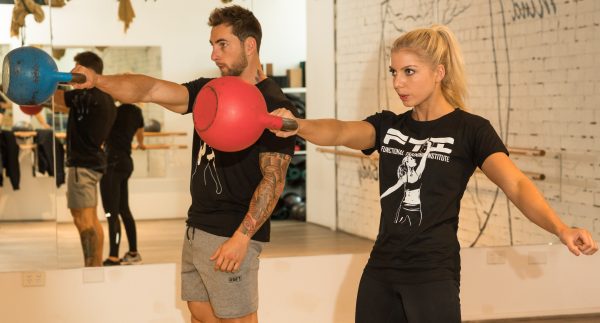by Boris Bojanovic
Chalk is an important component of kettlebell training weight training of any kind requires the participant to hold metal handles. The skin’s natural adaptation is to thicken, resulting in calluses. Chalk use is important as chalk dries out the hand which lets the kettlebell handle move in the hand without catching & potentially tearing calluses.
We do not recommend the use of gloves because they decrease the proprioception, or feeling in one’s hands, which can be problematic. This is because in correct kettlebell use the kettlebell moves position within the hand, e.g. cleaning the bell from hook grip to rack position. Wearing gloves adds a thick layer between the kettlebell handle & hand which lessens that feeling of correct motion. The thick layer also effectively thickens the kettlebell handle, which makes it harder to grip requiring users to tighten their grip. Over-gripping is already a common issue which interferes with kettlebell exercise execution.
Chalked hands
Back to chalk, weight lifting or rock climbing chalk comes in soft brittle blocks it should be kept in a bucket big enough for the user to put their hands into it to apply the chalk so that excess chalk doesn’t go everywhere & make unnecessary mess.
Also, it is unnecessary to crumble chalk to a powder. Chunks of chalk can be used to “draw” a layer of chalk onto the palms & fingers, more so it makes less mess than handfuls of powder. For the same reason, we also advise against clapping excess chalk off, however tempting it may be. Excess chalk can be easily brushed off with the hands without sending chalk flying everywhere.
Inevitably, calluses will thicken & if let to grow their potential to tear increases as well as them looking unsightly. The solution to this is to file them down with a callus file (which can be purchased at a supermarket or chemist). This is best done after soaking the hands in warm water, one minute should suffice, or in the shower.
One important point is to make sure you only file down the callus, not try to remove it completely. As stated above, calluses are a natural adaptation of the skin to holding metal handles but can easily be kept under control with the use of chalk & a file.
For for Newsletter

